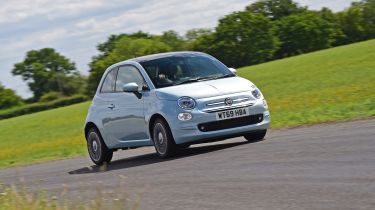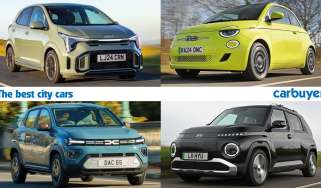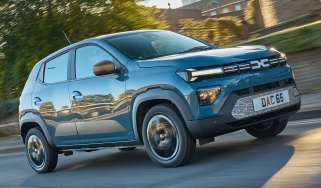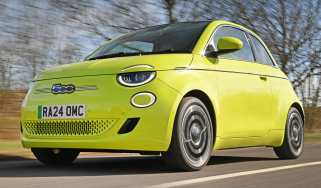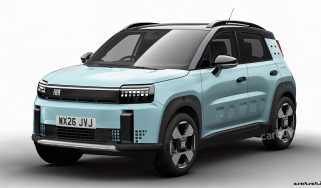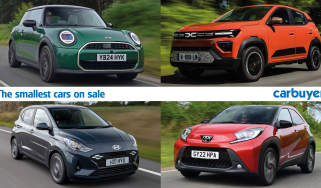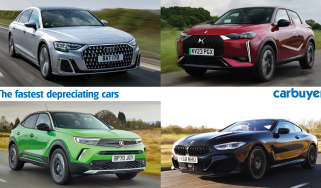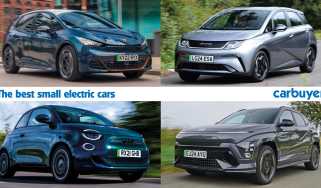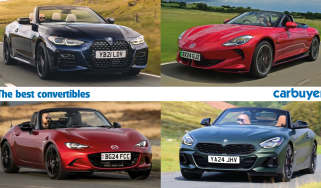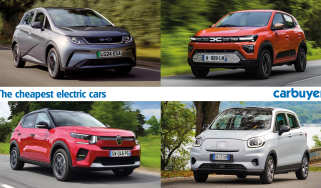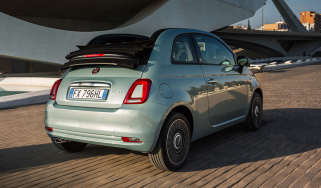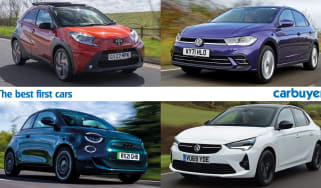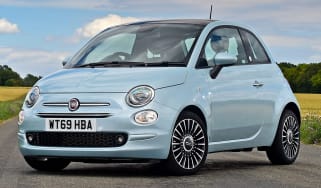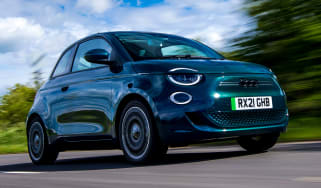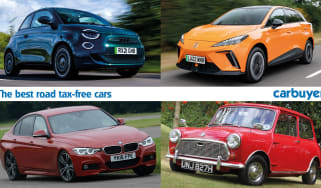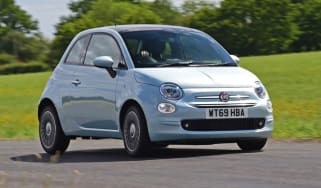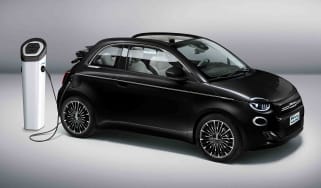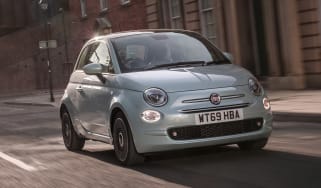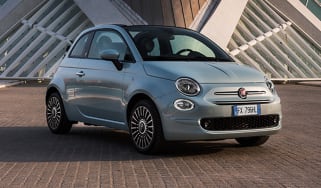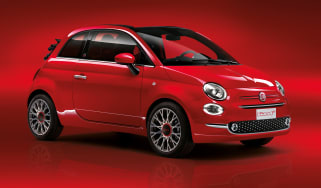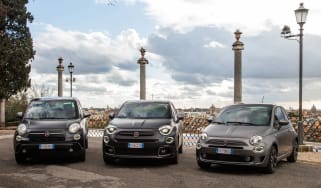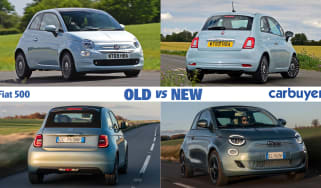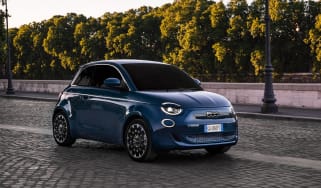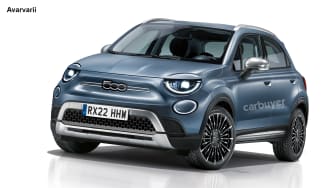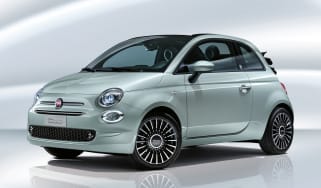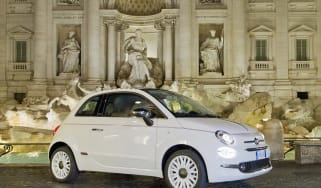Fiat 500 review – long-standing city car that’s showing its age
"The Fiat 500 is one of the most recognisable cars on the road and offers low running costs to go with its great design"
Pros
- Cheap to buy and own
- Trendy retro looks
- Easy to drive
Cons
- Poor safety rating
- Pricey special editions
- Fuel economy can fall short of claims
Verdict – is the Fiat 500 a good car?
Whether the Fiat 500 is a good car or not really depends on when you asked the question; when it launched in 2007 it was a charming, nippy city car runabout but 17 years on in 2024 it’s now extremely outdated, and safety and fuel efficiency have moved on substantially since then, so it’s hardly a good performer in these areas either. While it may be hard to turn away from its cute looks and fashionable image, your money would be better spent elsewhere.
Fiat 500 models, specs and alternatives
The Fiat 500 was released in 2007 and has only undergone minor updates since then, so it’s been around for a very long time. It draws heavily on the styling of the original Fiat 500 from the ‘60s, so it has plenty of retro appeal. It’s bigger than the classic 500 by about 50%, but it’s still a very small car by modern standards.
It’s currently sold alongside an all-electric Fiat 500 as a more affordable option, and though it’s been holding on for a long time, this petrol-powered version’s days are numbered, with Fiat confirming production will end during 2024. In its place the brand is reportedly reverse-engineering the electric 500 to accommodate a new hybrid powertrain to make it a more affordable alternative to the pure EV, but with all its up-to-date features.
More reviews
Like the MINI hatchback and discontinued Volkswagen Beetle, the Fiat 500 is more modern under the skin than its retro looks suggest, and thanks to the engine being in the front – unlike its 1960s forebear – it has a boot at the rear, albeit a small one.
The interior might have nods to the original 500, but it’s kitted out with modern touches like Bluetooth phone integration and air conditioning. An update in 2016 brought a few updates to the model, and in 2021 an even more modern, all-new, all-electric version of the 500 was introduced, which is even larger and has a new infotainment system.
The 'classic' version of the 500 now exists as a value proposition for Fiat buyers who aren't quite ready to make the switch to an electric car, and it remains an alternative to the Hyundai i10 and Peugeot 108. It's three-door only, so might not be the most practical choice for a young family.
Like the MINI, the 500 has been successful enough since its rebirth almost a decade ago to hatch a whole range of cars, which includes the far larger Fiat 500L MPV and Nissan Juke-rivalling Fiat 500X crossover, both of which have since been replaced by the Fiat 600 electric and hybrid SUV. The Fiat 500C convertible, meanwhile, adds fresh-air appeal to what's already a fun package, while the Abarth 595 hot hatchback adds a huge shot of adrenaline to the 500's frothy cappuccino.
Crucially, Fiat has avoided fiddling with the 500's much-loved formula too heavily since 2007 – only a handful of relatively trivial external updates separate the earliest cars from the latest examples.
Over the years the Fiat 500 has been available with a few different engines, including a 68bhp 1.2-litre four-cylinder and a 0.9-litre two-cylinder TwinAir engine with 84bhp, but both have since been discontinued.
Now the Fiat 500 is solely available with a 1.0-litre petrol engine with 12-volt mild hybrid technology. It stores energy into a compact battery as the car decelerates, with a starter generator to assist acceleration that also helps improve stop and start so it works more effectively. It can manage fuel economy of up to 57.6mpg and 110g/km CO2 emissions.
Driving the Fiat 500 is simplicity itself – you sit quite upright with great visibility, and the small size and light steering means it really feels at home in the urban jungle – particularly when the ‘City Steering’ button is used to take unwanted weight from the steering when you’re manoeuvring at parking speeds. It doesn’t feel out of its depth beyond the city limits either; all models acquit themselves fairly well on the motorway.
The interior design highlight is a dashboard colour-matched to the exterior paintwork to give a real ‘classic car’ feel. The rather upright seating position and tall roof means four adults can fit inside, but getting in the back is a bit awkward. And, although few will choose a city car for its luggage space, the 185 litres on offer here is considerably less than the 250 litres in a Volkswagen up! and Hyundai i10.
Trim levels have been tweaked various times over the years, too, but as of September 2024 the 500 can be had in an unnamed entry-level trim or ‘Top’ specification. Entry-level 500s get a seven-inch touchscreen radio with Apple CarPlay and Android Auto, 15-inch alloy wheels, air con, cruise control, a fixed glass roof, fog lights and start and stop technology. This is better equipped than in the past, as Fiat bids farewell to the car by lavishing it with all the extras. Top models get larger 16-inch wheels, a digital instrument cluster, automatic climate control, rear parking sensors and more vibrant paint options.
The seven-inch infotainment system runs Fiat’s Uconnect software, including Bluetooth connectivity, DAB radio, Apple CarPlay and Android Auto. However, this system is starting to feel its age, particularly compared with the technology in the latest electric Fiat 500.
Reliability and safety both cause some concerns. All 500s come with seven airbags, anti-lock brakes, hill-start assistance and systems to help with emergency stops. But this final version of the second-gen 500 received a disappointing score of three out of five stars when it was crash-tested by Euro NCAP, so it falls well short of rivals in that department. The 500 finished 67th out of the 75 cars ranked in our 2021 Driver Power owner satisfaction survey of cars currently on sale in the UK, didn’t rank at all in our 2022 Driver Power survey and has reappeared for 2024 in second-to-last place out of 50 cars.
What about buying a used or nearly new Fiat 500?
The Fiat 500 has been on sale since 2008 and as it’s been a big seller since then, there are absolutely loads of examples on the second-hand market. You can buy older models for a few thousand pounds or newer models for around the as-new asking price, but the best-value cars are somewhere in between.
What’s its history?
The Fiat 500 arrived in 2007 and was an instant hit - buyers loved its retro looks and the simple mechanical parts meant that it was affordable to buy. Small engines kept running costs low as well, so it was especially popular with younger drivers.
The initial range included 1.2 and 1.4-litre petrol versions and a 1.3-litre diesel. A two-cylinder 0.9-litre TwinAir model was added to the range later, and then there were a few changes over the years that boosted the power of the diesel and TwinAir engines. A 1.0-litre ‘mild hybrid’ engine was added in 2020, too.
There was a facelift in 2015 that changed the look very slightly, but for the most part the 500 has had the same design all these years. This means even the early cars still look up-to-date and make a great used buy.
Used Fiat 500 (Mk1 2008-present)
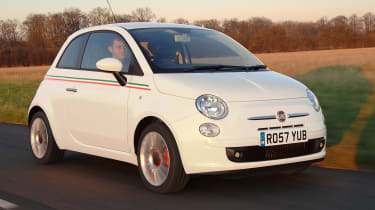
We’d make sure you buy carefully if you’re after a cheap early car, as they’re getting quite old now and may need repairs if you’re not careful. Go for a newer model and you can choose the excellent TwinAir engine - though it’s not the most economical - or the new 1.0-litre mild hybrid, which is really efficient. Avoid the diesel versions unless you do a lot of miles each year.
Read the full Fiat 500 Mk1 review...

